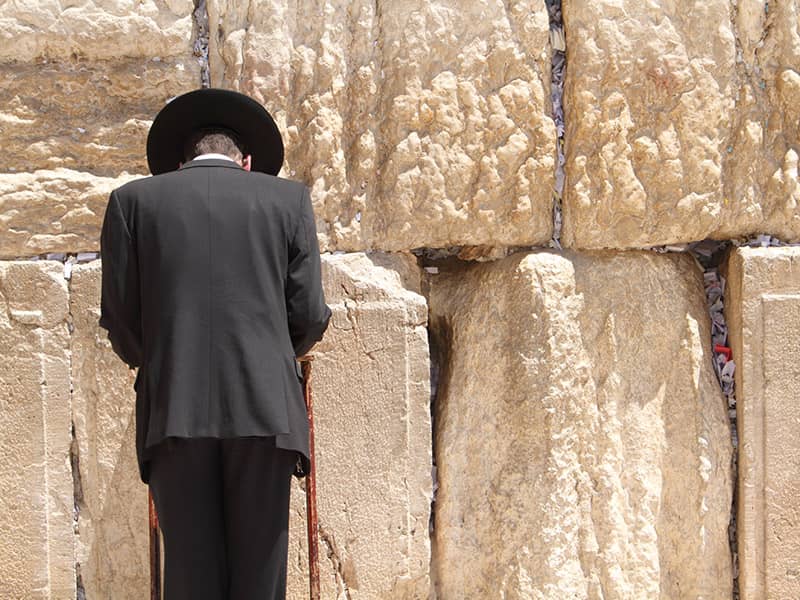I was recently asked to moderate a panel of two novelists who have written books about saints. One is my friend Valerie Martin. Knopf published her nonfiction study of St. Francis, "Salvation: Scenes From the Life of St. Francis." The other is Mary Gordon; last spring Penguin published her biography "Joan of Arc."
At first I thought, what's a nice Jewish boy doing "moderating" a talk about Catholic saints?
I suppose, without thinking hard on it, most consider saints to be pretty much Catholic territory. I admire the tradition of naming children after the saint's day on which they were born, and I think many of the saints are terrific, especially St. Jude, patron saint of lost causes. Here in New Orleans, our football team is called the Saints, and "The Saints Go Marching In" is our classic theme song. But other traditions also have saints: Sufis, Buddhists, Hindus--and yes, also Jews.
The word for saint in Hebrew is hasid, and in its original usage, a hasid was someone who followed a more rigorous spiritual path, a holy path. (That is, for instance, how Maimonides uses the term.) The analogy to Catholic saints isn't perfect--there's no official category in Judaism, for instance--but the subject of Jewish saints is fascinating in its own right.
But how are Jewish saints remembered? Here are some practices connected with Jewish saints I've learned from my teacher, Rabbi Zalman Schachter-Shalomi, something of a patron saint himself of the Jewish Renewal movement.
Reb Zalman teaches that the Jewish calendar is our catechism. Along with all the holidays and celebrations of the Jewish year, he also includes the yahrzeits of those rebbes and teachers from the past that are most important to him. (A yahrzeit is the anniversary of a death.) Their yahrzeit date becomes the occasion for a consultation with them, a communion or meditation on their teachings and the significance of their lives. By remembering their teachings on the day of his or her death, the Jewish saint continues to live.
It so happens that the 18th of the month of Elul is a very special triple-play saint day. The number 18 written in Hebrew letters spells Chai--life--and so "Chai Elul" serves as a meditative marker that helps us prepare for the Jewish New Year.
First of all, Chai Elul is the yahrzeit of one great teacher, Rabbi Judah Loew of Prague, also known as the Maharal, who died on Chai Elul in the Jewish year 5369 (1609). For many, he's best known in legend as the creator of the Golem of Prague, the mythical creature still a fixture in Czech culture; in the world of Jewish scholarship, he is one of the great educational reformers of Judaism. To those involved in Chabad-Lubavitch, he is one of the ancestors of the founder of Chabad, Rabbi Shneur Zalman of Liady, known to his followers as the "Alte Rebbe"--the author of the great Hasidic treatise the Tanya and the founder of the Chabad lineage.
So Chai Elul would seem to be a good day to tune in to the teachings of one of these three holy teachers and to see the world through their eyes. (For instance, if you want to "tune in" to the Baal Shem Tov on his birthday, check out the book "Your Word Is Fire: The Hasidic Masters on Contemplative Prayer" [Jewish Lights]--there's a nice teaching about prayer from the Baal Shem Tov called "Meet Him in the Word.")
Chai Elul has yet another significance. It marks a 12-day period before Rosh Hashanah, the Jewish New Year. Elul is the month of contemplation and repentance in preparation for the New Year.
There is a teaching Reb Zalman heard from his own rebbe, Rabbi Joseph Isaac Schneersohn, which goes like this: There are 12 days from Chai Elul to Rosh Hashanah. So on each day, beginning with Chai Elul, you go over what happened last year. Each day gives you a chance to check back on a month. So on the first day, you meditate on what you were doing last year around Rosh Hashanah and Yom Kippur; on the second day you meditate on what you were doing in the month of Heshvan (more or less, October); and on the third, what you were doing in Kislev (which includes Hanukkah).
With those prompts to memory, you may begin to reflect on any people you might have harmed or injured, and use that as an occasion to repair the damage. You can then call up someone you've distanced yourself from and make up for any harm you might have done. It's our tradition that the harm we do to others must be repaired before we can ask forgiveness from God on Yom Kippur. So, using Chai Elul as a marker, each day, month by month, you can reflect on the previous year, so that when you come into the New Year, you have prepared yourself for renewal--and atonement.
Getting started on reflection and repentance isn't always easy. So what's helpful about this teaching is that when you begin, you can call on the aid of some powerful teachers. In this way, you unlock the mystery of "Chai." These teachers may be dead, but their teachings can be made to live again just in time for the New Year.

